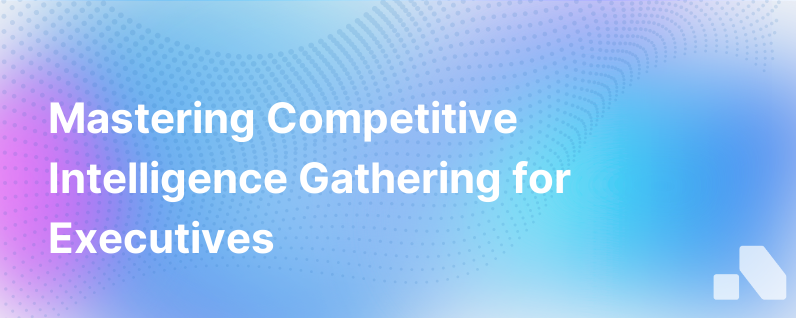How To Gather Competitive Intelligence
Published on November 18, 2023 by David Zhang
In the high stakes world of business, knowledge isn't just power; it's the lifeline that separates flourishing enterprises from those struggling to survive. Competitive intelligence (CI) is the armor needed to navigate the complex and often volatile business landscape. Fortunately, gathering CI isn't as daunting as it seems. With the right methods, tools, and team, you can equip your organization with a profound understanding of its competitive environment.
What is Competitive Intelligence?
By definition, competitive intelligence involves gathering, analyzing, and interpreting information about competitors so that a business can maintain or develop its competitive advantage. It encompasses various activities, among which competitive monitoring, rival profiling, and market trend analysis dominate.
The Importance of Competitive Intelligence
Competitive intelligence is not an option but a necessity, particularly in highly competitive industries. Its importance underscores in the following points:
-
Aids Strategic Decision Making: CI provides data-centric insights, assisting organizations in making informed strategic decisions.
-
Keeps Businesses Prepared: CI helps foresee market changes and keep up with shifts in consumer demands.
-
Mitigates Risks: With CI, businesses can reduce the uncertainties that accompany business strategies and operations.
-
Helps Outmaneuver Competitions: Armed with insights on competitors' maneuvers, organizations can strategize to stay one step ahead.
-
Identifies Opportunities and Threats: Continuous CI enables organizations to spot potential market opportunities and threats.
Gathering Competitive Intelligence: An Effective Approach
When it comes to gathering CI, a rigorous, systematic approach is your best ally. Here's how you can go about it:
1. Identify Your Competitors: Your competitors fall into two categories: direct and indirect. Direct competitors offer similar products or services as you, and indirectly compete with others serving the same customer base but with different products or services. List them out and prioritize based on their impact on your business.
2. Define Intelligence Goals: Determine what type of intelligence you need. Are you interested in their marketing strategies? Their pricing approach? New product development? Identify specific areas that will drive your business decisions.
3. Collect Data: Start gathering information on your competitors. The resources for this may include their websites, social media channels, and customer reviews. Attend industry events, webinars, or trade shows to gather firsthand information.
4. Analyze Data: Raw data isn't useful; the magic lies in interpreting the findings. Set up team sessions to dive deep into the data and draw conclusions.
5. Implement & Monitor: Use the gathered insights to shape your strategies and keep abreast of both the market and the competition.
Tools and Techniques for Gathering Competitive Intelligence
In the age of digitalization, there exist numerous platforms and tools that can make the process of gathering CI streamlined and efficient. Here are some ways to do so:
1. Use Competitive Intelligence Tools: AOMNI, for example, is an AI tool that helps gather actionable insights providing real-time account research, competitive insights, and personalized content in just 15 minutes.
2. Leverage Social Media: Social media channels are rich sources of competitive intelligence. Analyzing a competitor's posts, customer interaction, and advertising approaches can procure valuable insights.
3. Opt for Web Scraping: Web scraping helps in extracting vast amounts of data from your competitors’ websites. You can use this to analyze trends and patterns.
4. Survey the Customers: Customer surveys can give you insight into why consumers choose your competitors, what they perceive as strengths, and areas where they can improve.
5.Unleash the Power of Google Alerts: Set up Google alerts for your competitors to keep track of their online activities.
6. Monitor Industry Trends: Keep an eye on rising industry trends and news articles.
Conclusion
Competitive intelligence is not an exercise you do once and then forget about it; it's a continuous process—an integral and ongoing part of your business strategy that adds value to almost every aspect of your organization. Remember, while intelligence is important, the advantage comes from acting on this intelligence. Equip your team with tools that streamline the CI process, such as Aomni, to gain an edge in today's hyper-competitive business environment. Recognizing and understanding your competition will allow you to stay a step ahead, helping your business thrive and grow.